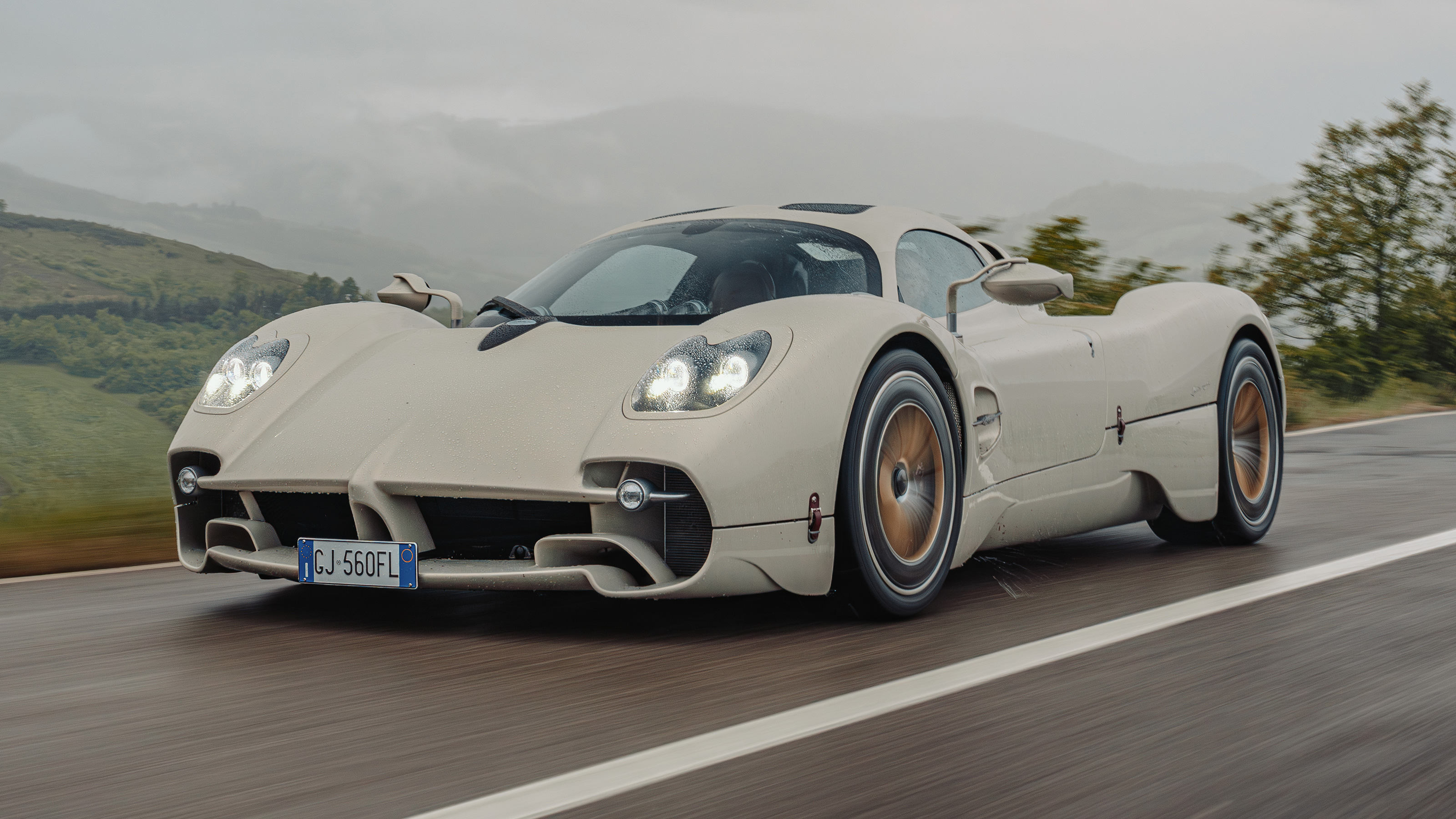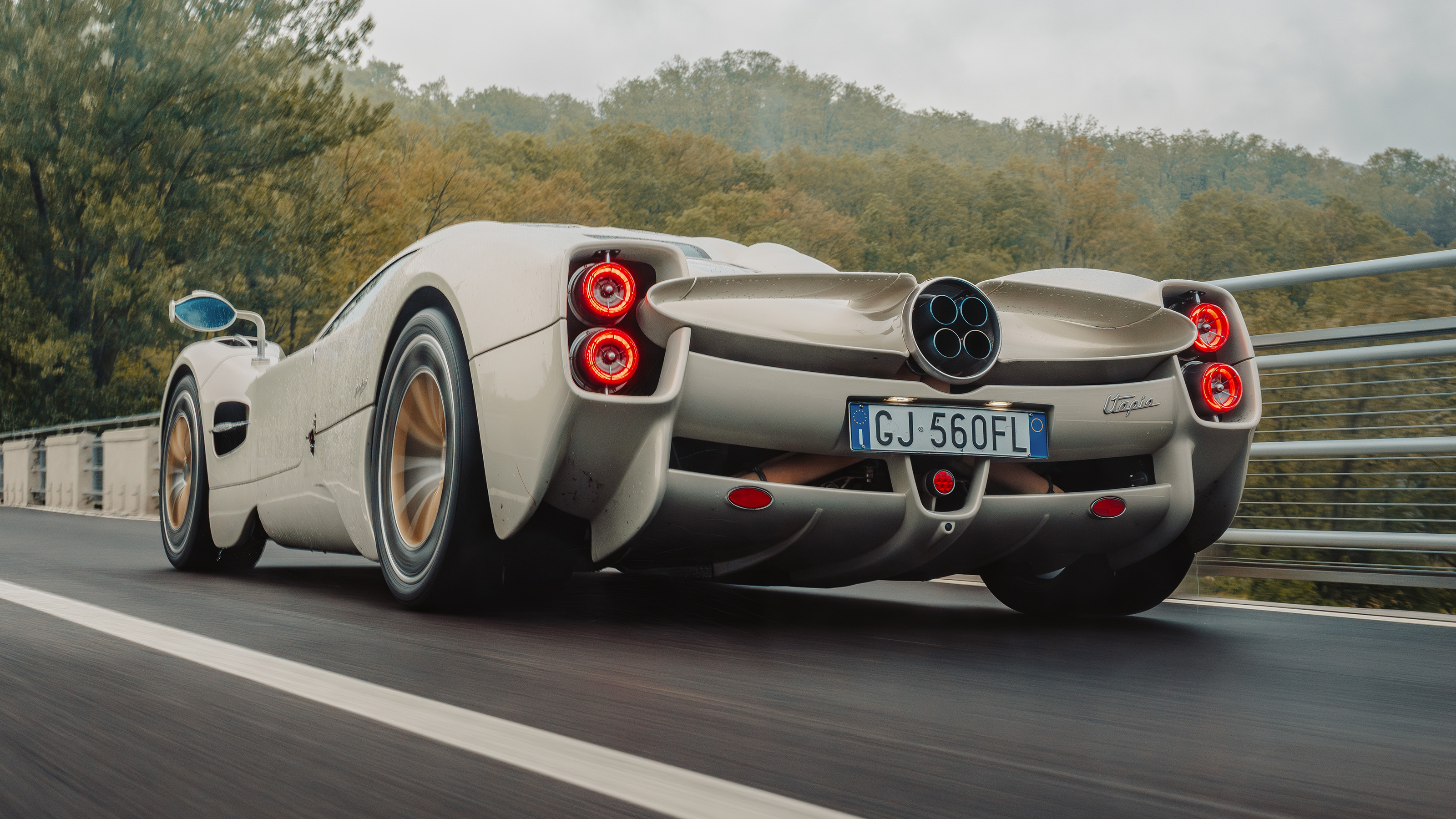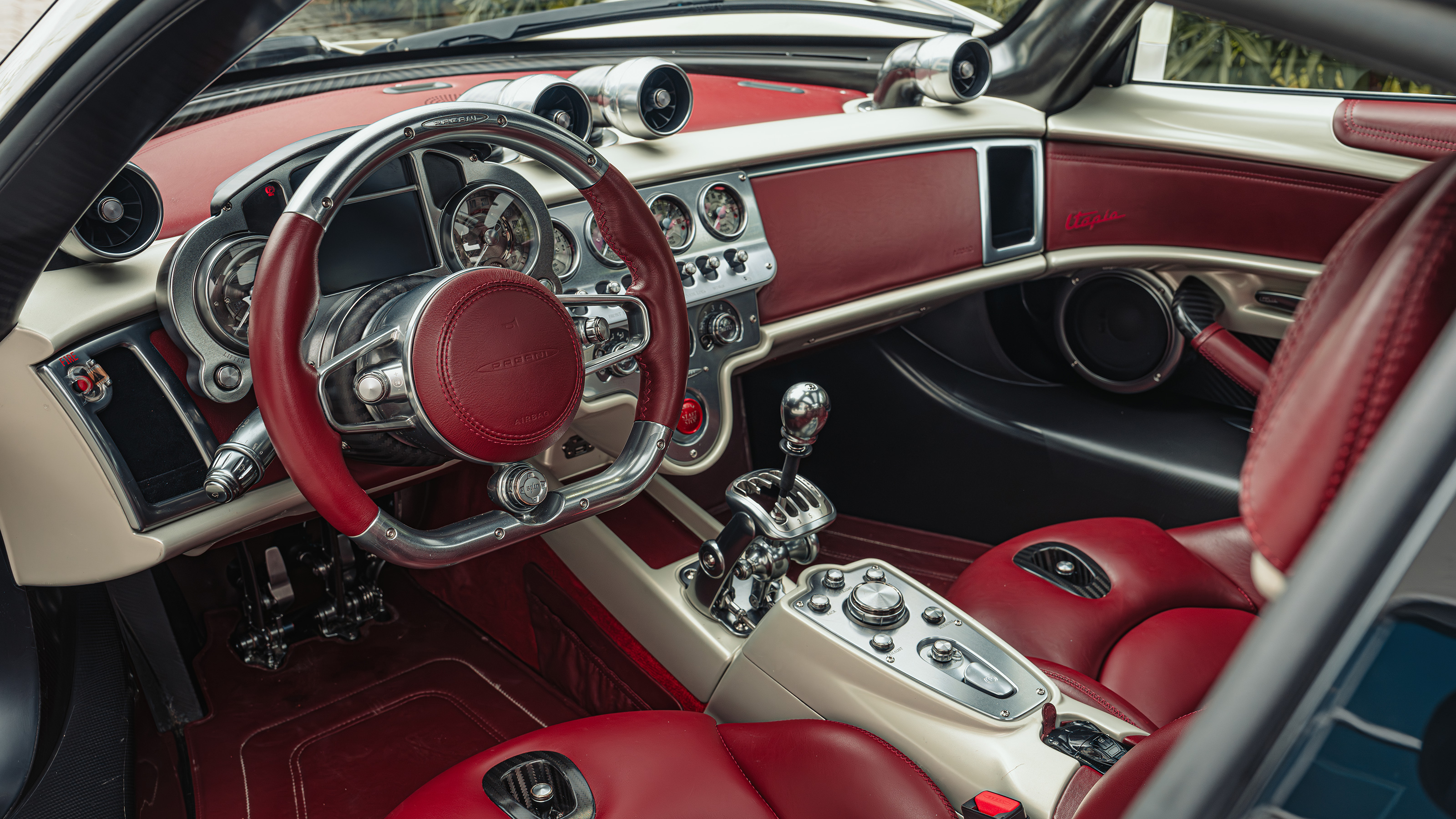
Pagani Utopia review
Driving
What is it like to drive?
We drove the Utopia for two days. For most of that time it poured with rain and we learned more about the lack of rain gutters than we did the dynamics. Then, right at the end, it finally dried out. It was like opening the door to a new world.
In the rain some aspects had still been deeply impressive. That you could drive it at all without being nervy for a kick-off. The adaptive suspension (by British specialists Tractive) has wonderful compliance. So much so that you rarely find yourself needing to press the dash button to soften it off. It rides bumps and resists impacts with real fluency and progression.
Still, the combined effects of vast torque, slick, bumpy roads and 325-section, 22-inch rear tyres was a near-perfect recipe for savage wheelspin which made the Utopia seem snatchy on the tight, narrow roads not far south from Pagani’s San Cesario base.
And in the dry?
A very different perspective. It proved how capable the chassis is at dealing with such prodigious power. It never loses its sense of calmness and control, even when being hurled forward with outright violence. And that thrust is utterly mighty. Don’t worry that the twin turbo V12 won’t even hit 7,000rpm. This is an object lesson in how to create drama and excitement without revs.
There’s very little lag, and even short shifting away from the lights at tickover, speed builds quickly. The turbos remain silent even beyond the point boost really starts to hit, but when you do start to hear the whistle, that’s when the runaway reaction starts. From here on the acceleration is exponential, this expanding explosion of power. The first few times you’ll lift off, giggle and feel relief it’s over. Later, you’ll get more confident deploying all 852bhp.
And then there’s the sound, distant at first, deep and thrumming, that quickly builds into this insistent howl. Characteristic V12 smoothness, brutal background theme. It’s at once soothing and alarming.
How does the manual gearbox cope with these forces?
Pagani has seemingly achieved the impossible. It’s either that or clutch and manual gearbox tech has quietly improved light years since the days of the Lamborghini Diablo and despite manuals being in much less demand. The triple-plate clutch is so easy and manageable that at least one client has asked for it to be made heavier. It bites cleanly and takes all the sting out of the urban crawl. That’s helped by a throttle that’s a bit soft on light openings. Nice for town work, more hit and miss if you enjoy performing your own heel ‘n’ toe downshifts. No need for that when it’ll blip for you, though.
The shift itself is arguably better to look at than to use. Hardly surprising, as we can’t think of a prettier mechanism ever fitted to a car. Firstly, seven speeds are a lot to juggle, and although Pagani has done some clever stuff so the lever will temporarily centre on the second/third plane - making it easier to change up from first - the shift itself is ever so slightly rubbery compared to, say, the zero-slack shift of the GMA T.50. However, different type of car, and the mechanism is well matched to the feel and action of the steering, pedals and brakes. Doesn’t need much effort, is fast through the gate, clacks prettily and is deeply satisfying.
More than that, the sensations it delivers, the control and connection this simple lever gives you, the fact it’s not hard work and suits the rest of the car so well, makes it the transmission to have. And you can drive it as an auto: just stick it in fourth. It’ll pull away happily and do everything else you need.
Is it a capable cruiser? Could you do distance in it?
In terms of ride comfort, absolutely. The simple seats are well shaped, the suspension glides really nicely at higher speeds and the steering doesn’t really get distracted by camber or bumps (it does a bit at lower speeds on broken surfaces). The only issue is cabin noise and refinement. Pagani insists that customer cars have more sound deadening in the front arches than our test car, in which gravel tinkled noisily in the arches and road noise echoed back from the bare carbon and glass roof. No noticeable wind noise from those elaborate wing mirrors though.
Is it fun to drive?
It’s more connected to the road and the driver than you’d ever expect. It’s exactly the car that Pagani intends: the steering has a fast rack, turns quickly and precisely into corners, but isn’t the last word in feedback. But it suits the car. This isn’t a hard-edged, aggressive car, it’s more soulful than that, more multi-faceted. Same applies to the Brembo CCM-R brakes. They’re easy at the top end, but get into their travel and they firm up, bite harder, show their teeth.
The Utopia sits between the GMA T.50 on one side and the Bugatti Chiron on the other, and does a pretty good job of leaning both ways. The controls filter signals from the gearbox, steering and suspension because Pagani wants the car to relax its driver, to make them feel in control, not have them tense and edgy because they’re bombarded.
It’s emphatically a driver’s hypercar. It’s just that you don’t have to go digging for thrills, because there’s tactility not only in the Utopia’s road manners, but the very components you’re operating. This immerses you in a sense of complete wonder at your surroundings, at the frame you’re viewing the road through, at the sensations coming back to you, at the operation of the controls. There is nothing like a Pagani, and Pagani hasn’t done it better than this.
Featured

Trending this week
- Car Review
BMW iX3






